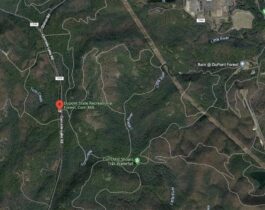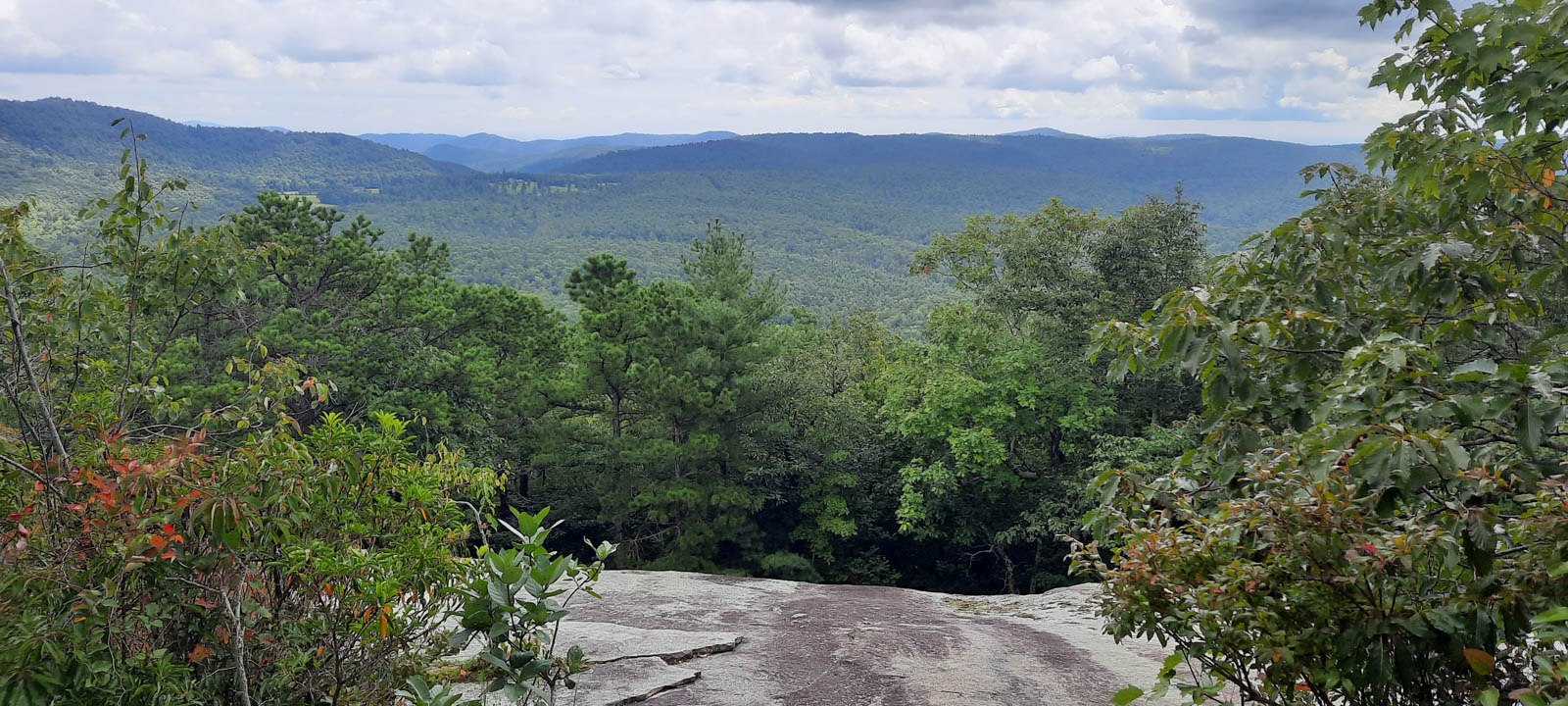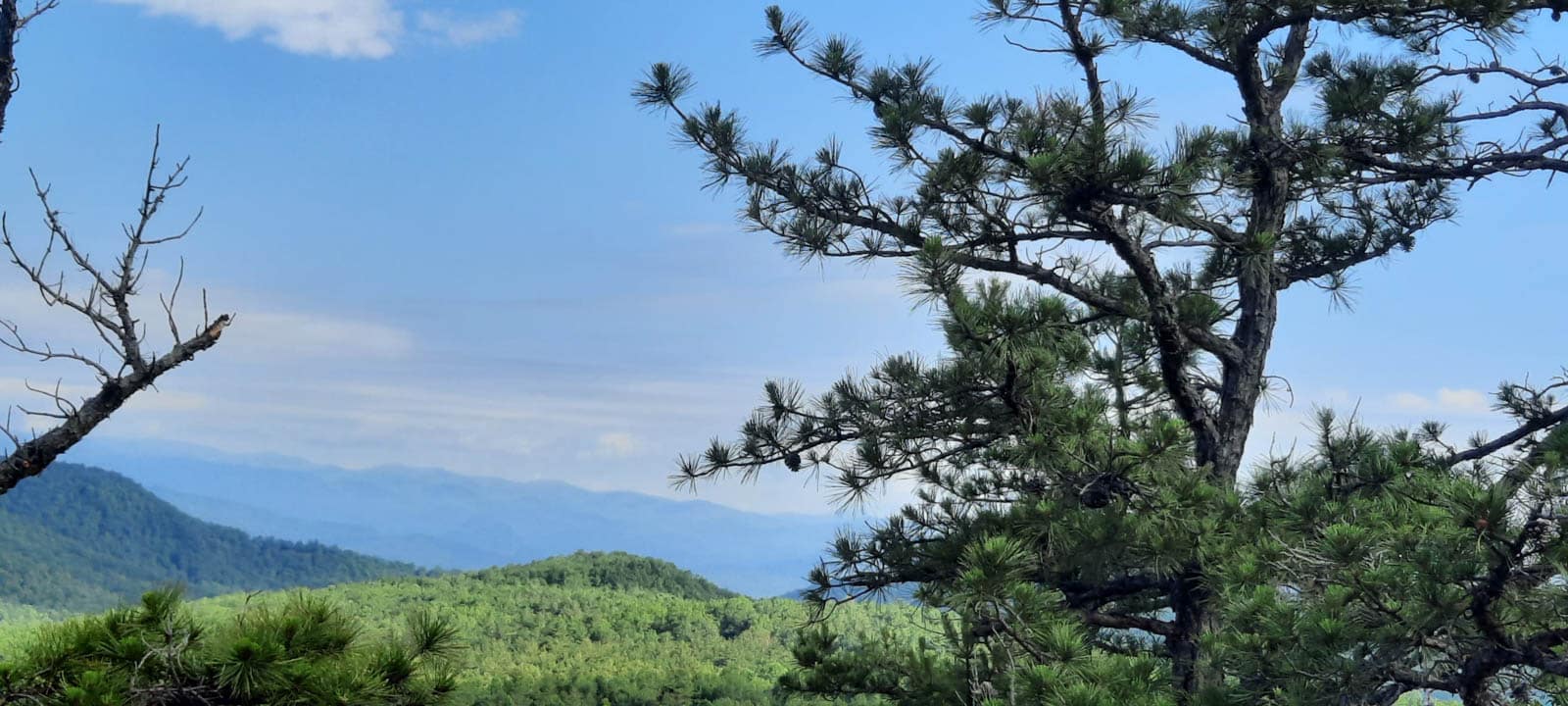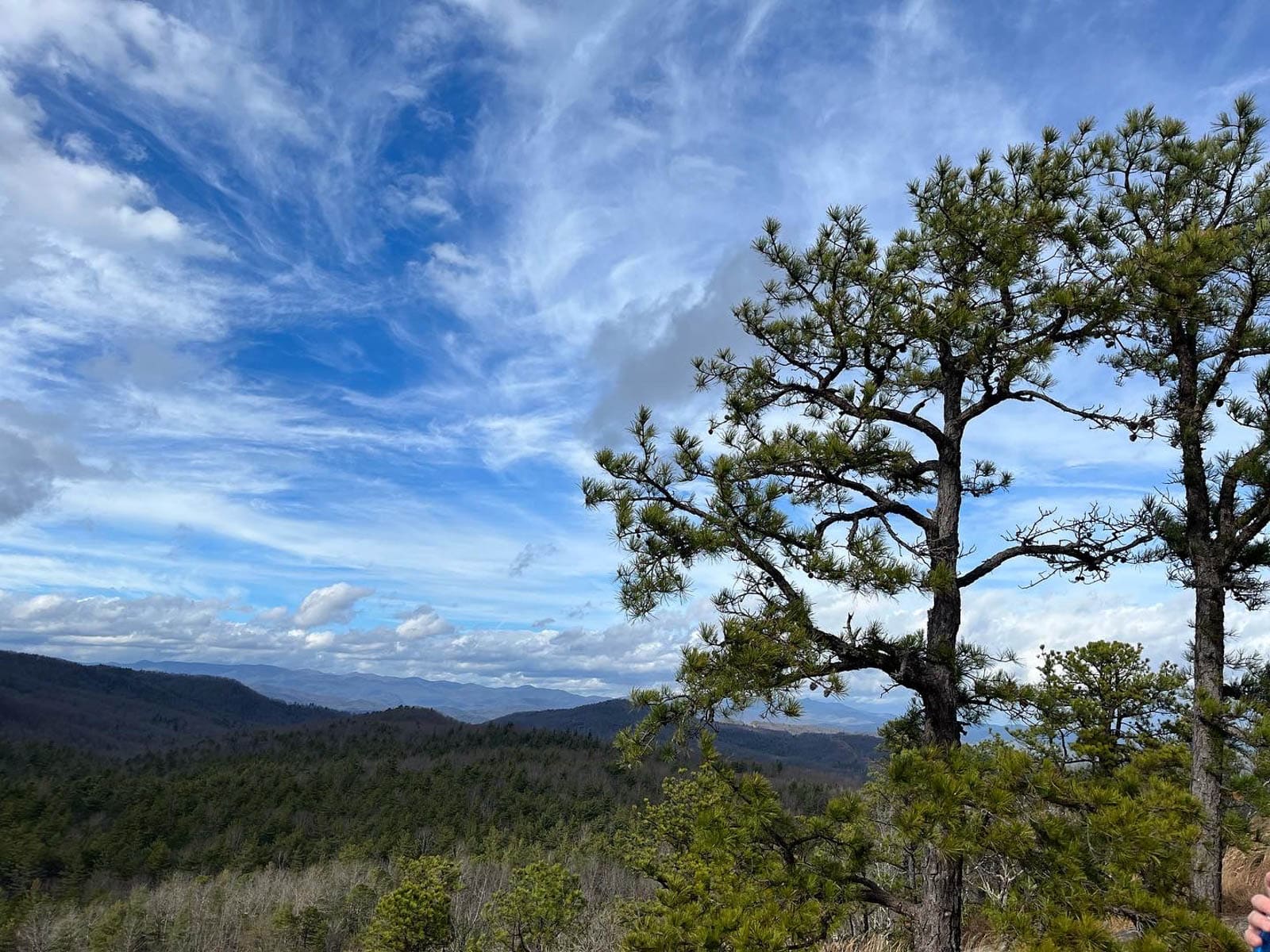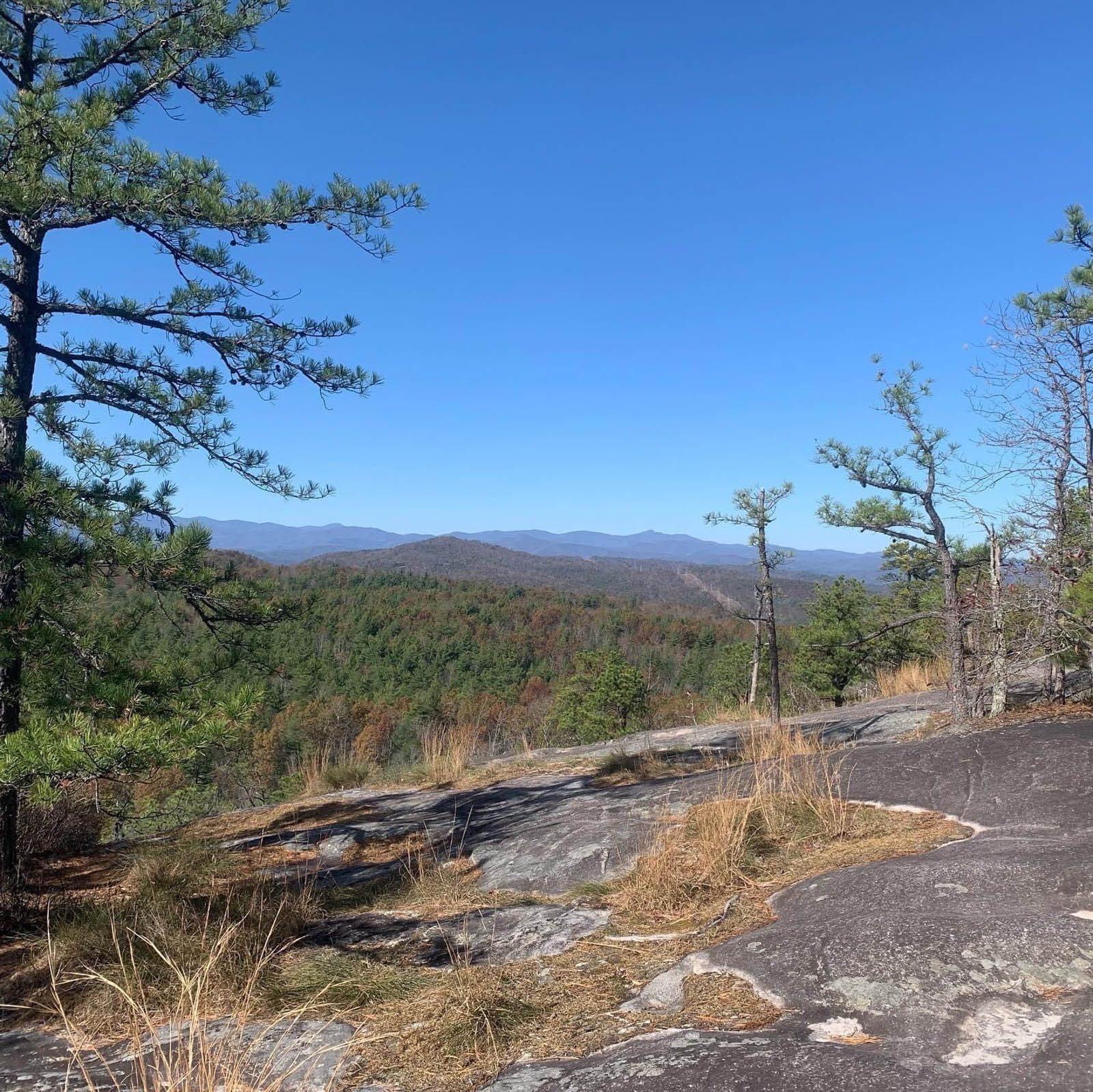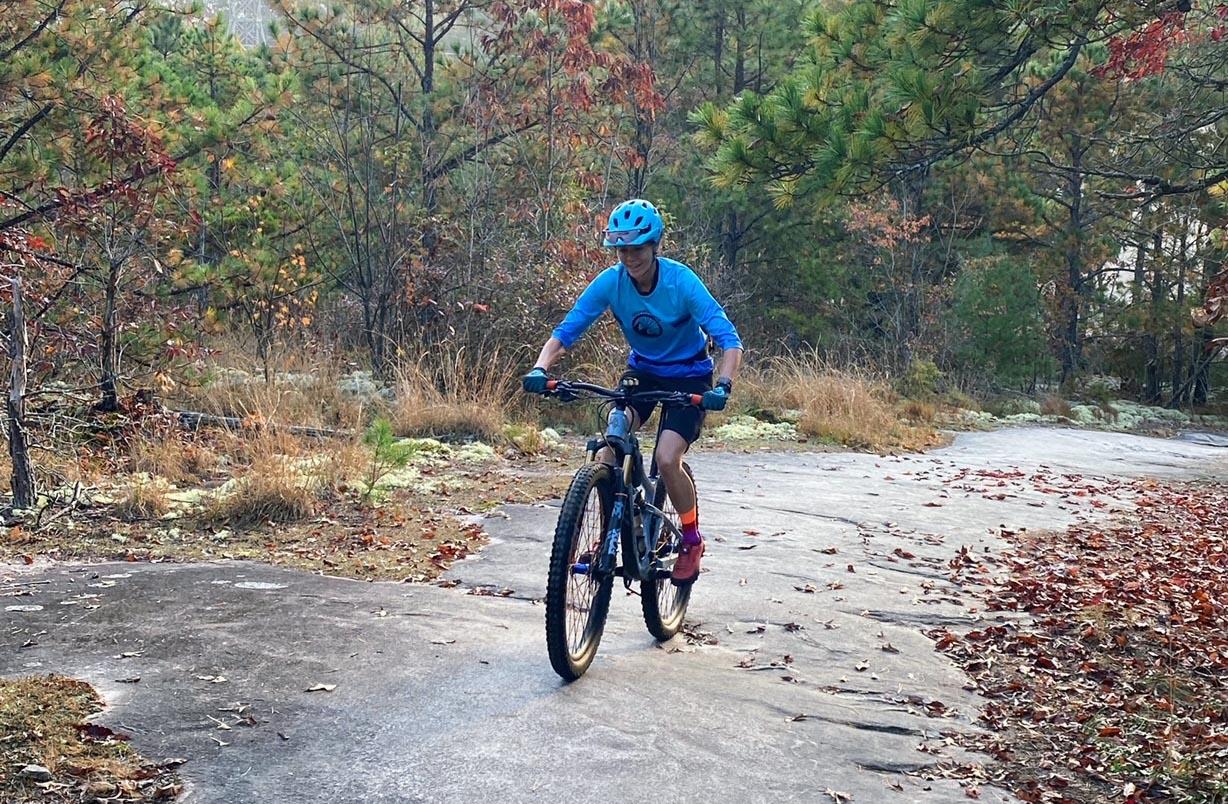This 4.5 mile stunning loop provides amazing mountain views and beautiful scenery. Popular with mountain bikers and hikers, Big Rock and Cedar Rock Mountains boast acres of exposed granite creating a very unique Forest experience.
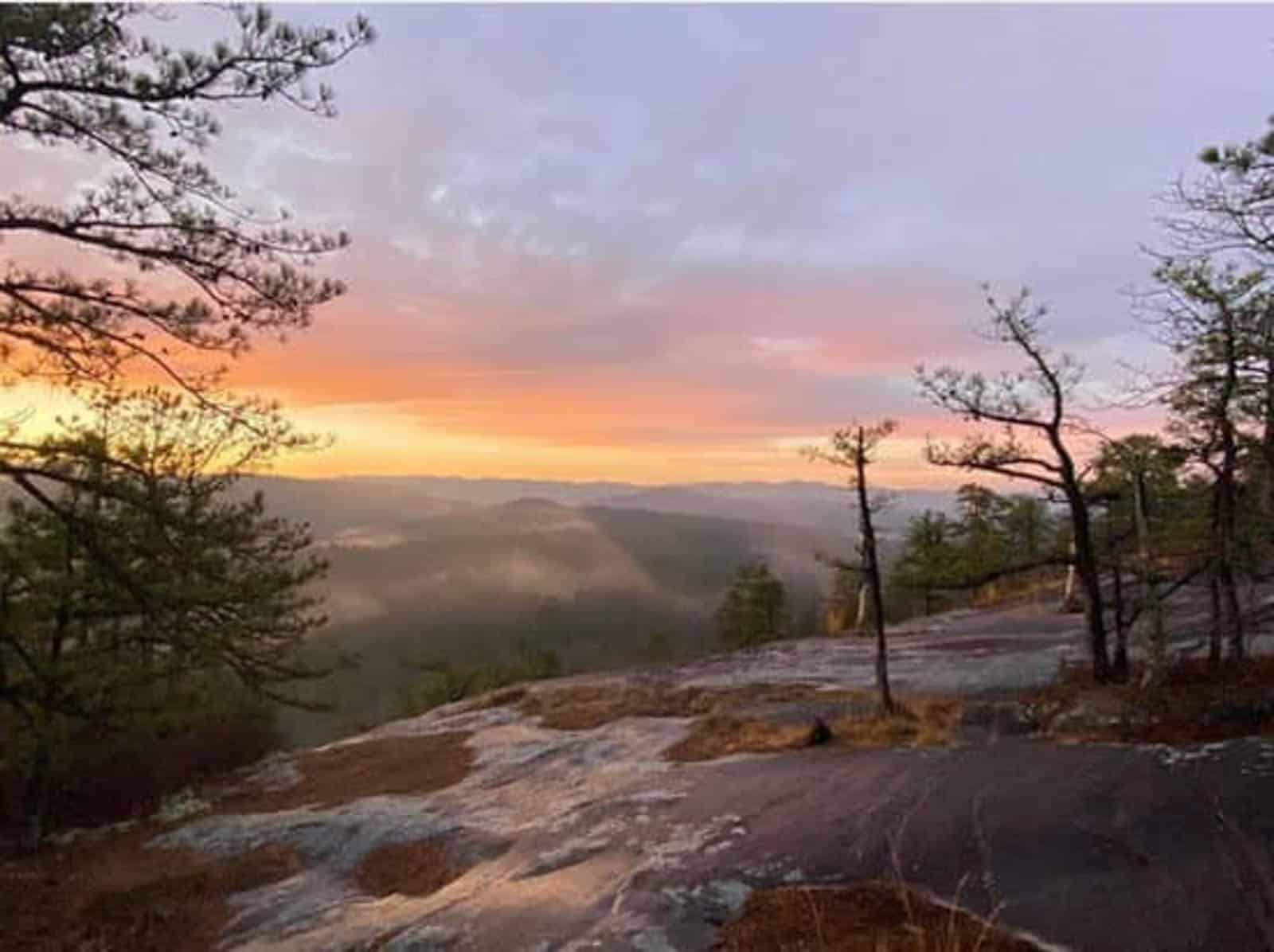
Things to know
- Share the trails. This is a multi-use and multi-directional trail. Mountain bikers should control their speed and be prepared to yield to horses and hikers. Equestrians should communicate with other users about how to safely yield to your horse.
- Dogs are welcome, but they need to be on a leash at all times and humans are responsible for removing all poop bags from the Forest. Please and thank you.
One of the most scenic hikes in DSRF is to park at the Corn Mill Shoals parking lot on Cascade Lake Road and take Big Rock Trail to the top. There you should turn right onto Cedar Rock Trail to descend. Not too far down Cedar Rock Trail you will see many dinner-plate sized depressions in the rock. These are called panholes. They are formed by various kinds of weathering. One mechanism is that they fill with water that has rotting vegetation in it. This water becomes acidic and eats away at the rock. Winter freezing of the water can also weaken the sides and bottom of the panhole and make them increase in size.
A bit further on the trail opens up to come onto a rock outcrop some hundreds of acres in size. These outcrops are called ‘Southern Appalachian Granitic Domes’ and they occur sporadically only in parts of NC, VA, GA and AL. The rock is not granite. It did start life as granite hundreds of millions of years ago but in the intervening time period it has gone through a metamorphosis and is now categorized as gneiss. DSRF has about 83 of these domes though many of them are quite small.
The moss mats that grow on the domes are a combination of Selaginella Moss (the darker component) and Reindeer Moss (the lighter component). But neither of these are true mosses. Their closest relatives are actually ferns. They are very tough plants. There is virtually no soil under them, they depend entirely on rain run-off for water and they are subjected to winter winds and freezing and hot sun in the summer. They can be hundreds of years old and they recover from abuse very slowly so you should avoid stepping on them.
